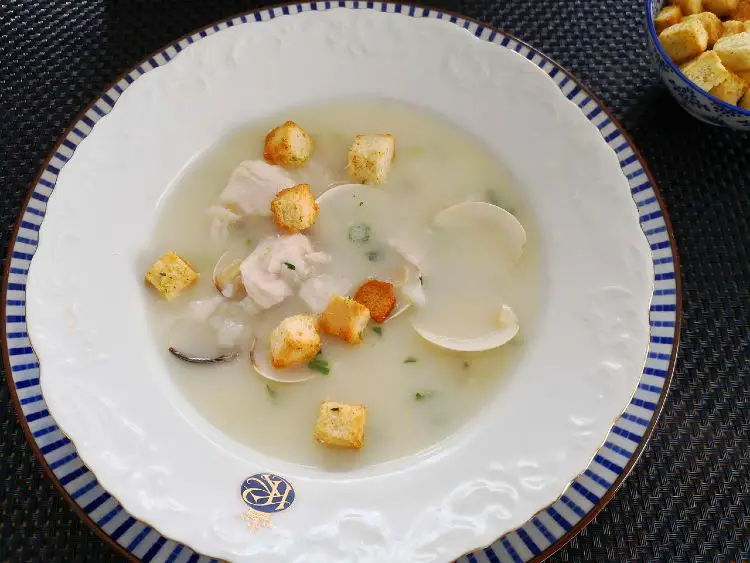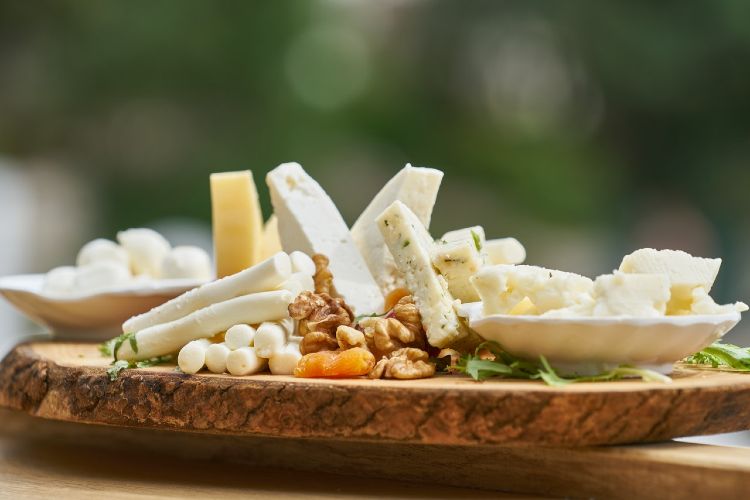Wild Food forage and Cookery with Christopher Robbins and Rachael Demuth
I am standing in a beautiful windswept valley close to the village of Northend, near Bath, and Christopher Robbins, medical herbalist, pathologist and University lecturer, is telling a group of ten would-be foragers that all around us there is free food. “Spring and early summer is the very best time to forage,” he explains. “The leaves are fresh and green, the plants are still small, tender and sweet.” As soon as plants start flowering, they will already have completed their growth structure, so stems are likely to be very tough and leaves are likely to be bitter. Not that that is a bad thing, for as Christopher explains, bitter salad leaves are good for cleansing the liver.
We walk single file past lush grass banks, hawthorn and hazel hedges, wild orchids, buttercups, cow parsley and beautiful yellow marsh irises. We are walking on Wessex Water terrain, and to the left and right Christopher and his partner, Rachel Demuth are pointing out plants that we can collect for our lunch or can analyse and discuss for their medicinal benefits, with wicker baskets, foraging stick and sharp scissors at the ready. In total we find the following:
Meadow sweet
The leaves of this plant can be infused to make a tea that help cure gastritis and inflammatory diseases. It is the original source of aspirin.
Mare’s Tail
This plant has astringent qualities, contains silica, it is considered a living fossil and it is used to treat urinary inflammations.
Wild mint
Very sweet and aromatic, it can be infused, stimulates the liver and aids digestion after meals.
Ragged Robin
A very pretty pink flower, good for table decoration.
Hog weed
At ground level, very thin tender stalks are considered foragers’ asparagus, and can be eaten blanched.
Colt’s foot leaf
Used to flavour beer and make lozenges.
Burdock leaf
Velvety leaves, the stalk can be peeled and eaten.
Hawthorn
The young leaves are considered as “bread and cheese” by rural people, and later in the year the berries can be used to make hedgerow jelly.
Hazel cobnuts
Delicious as snacks
Wild garlic
When young the leaves are very soft, aromatic and tasty in pesto and soups. The flowers and seed heads can also be eaten.
Nettles
High in formic acid, the soft, young tips can be picked and used in soups, risotto and also helps to heal inflammatory pain.
Red clover
The flowers are sweet and decorative in salads.
Sheep sorrel
Small spear shaped leaves that are used in salads and sauces, although quite acidic.
Elder
Every part of the tree is used medicinally and was known as “the people’s medicine chest”. The flowers make delicious cordials and fritters.
Dandelion
The flowers can be used to make wine and young leaves can be used in salads.
Alexanders
Grows at the sides of roads and is used braised, boiled or chopped and added to sauces.
Comfrey
The leaves are eaten like spinach or even dried as tea.
Ground elder
Can be eaten in salads, stews and soups. The plant is used to treat gout.
Hedge Mustard
Both the leaves and the flowers can be eaten in sauces and salads.
After filling the basket with our finds we drive back to the Vegetarian Cookery School in Terrace Walk, in Bath, where we are going to cook our lunch.
The school was established by Rachel Demuth ten years ago, in her own home. She is the founder of Demuths vegetarian restaurant, which is just a short walk around the corner, in North Parade passage. Last September she moved the cookery school to these new premises and since then has set about creating a whole range of courses from bread making, to Moroccan, Indian, Italian, French, Greek and Thai cookery as well as teaching children’s classes.
The cookery classroom is huge, with tall ceilings, big windows, lots of storage space and state-of-the-art equipment. It is remarkable that in a city with eighty thousand inhabitants and two million visitors such a rare and impressive space could be found, with views of the Abbey on one side and The Parade on the other.
On the top floor of the building there is a very spacious reception area, where the students meet and drink tea and coffee with biscuits while Rachel describes the day’s schedule. The actual class is on the first floor, and to one side of the room there is a very large preparation and storage room that overlooks a very beautiful garden.
The equipment has been provided by Neff, Kitchen Aid and Falcon. Cupboards and walls are white, work surfaces are stainless steel and on every shelf you can see artisanal wooden bowls, pestles and mortars and hand blown glasses which Rachel has picked up from her many travels around the world, learning all about the vegetarian cuisines and customs of faraway nations and cultures.
Through a mixture of demonstrations and hands-on cookery we set to work organising lunch. We enjoyed a delicious potato, onion and wild garlic soup with Rachel’s own sourdough bread. She originally worked as a baker at Neal’s Yard before becoming a professional restaurateur. She told me that her mother was an excellent cook and gardener, who encouraged her children to cook, grow and harvest seasonal food from a very early age.
We prepare a wild herb and hazelnut pesto, a salsa verde, a nettle risotto with morel and St. George’s mushrooms, sautéed burdock, hop shoots and hog weed, a large salad decorated with wild flowers, comfrey and nettle fritters in tempura batter and for pudding we enjoy crisp elderflower fritters washed down with an extremely fragrant elderflower cordial.
Throughout the course we are split into small teams: some of the students are washing and preparing the leaves, others are chopping, while some are frying or sautéing. Christopher de-mystifies the myths and legends of wild plants, explaining their form and function as we prepare each dish, dipping into reference books to show us other varieties and hybrids.
For me the most memorable part of the course was the pan frying of the Bath asparagus, a very pretty plant that has slender stalks and a wheat-like closed tips. These spears were collected on nearby land and were served with just a knob of butter and sea salt and eaten as an accompaniment to the wild foraged salad. They were exquisite, with a lively freshness and a subtle hint of asparagus about them.
The elderflower cordial was extremely aromatic and sweet and the elderflower fritters, sprinkled with icing sugar, were wonderfully crispy, light and fragrant. Rachel dipped the flower heads in an ice cold tempura batter, made with fizzy water, and then fried in rape seed oil.
The course lasts a total of seven hours, and the team work tirelessly, without sitting or stopping, to ensure that the ambitious menu is accomplished.
By the time we leave we are all astonished as to how much food can be garnered from the wild, how simple and nourishing our lunch had been and how much more connected we feel to nature and the soil. We are given a very comprehensive file pack: a list of seasonal wild plants that can be picked at this time of year, an explanation of what they can be used for and all the recipes that we have cooked.
Christopher teaches at the University of Westminster and has written copious books and articles about herbal medicine, and yet he does not overpower you with jargon, methodology or science. He is clearly passionate about his specialist subject, and conveys a deep respect for the plants that have helped feed, nourish, heal and protect mankind for millennia.
If you are lucky enough to do this course, I would advise you to wear comfortable shoes, bring waterproof clothes and don’t forget a good sized basket. Trust me, you will be amazed and overwhelmed at the size and range of Mother Nature’s larder and medicine cabinet.
Contact Details
Website of the cookery school: www.thevegetariancookeryschool.com
Website of the restaurant: www.demuths.co.uk
Christopher Robbins’ website: www.robbinsherbal.co.uk

